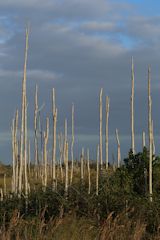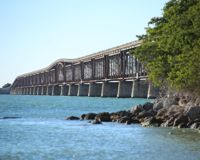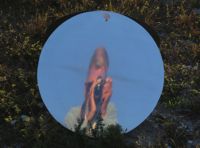I bought a new camera body before Christmas. It has me thinking about workflow.

Sometimes I get distracted.I’ve been adding images to my gallery site and even added a couple of new categories: Harbors and Bridges and Aminals which my spell check doesn’t like much.
 Anyway, I took a few files into the digital darkroom which is where the real magic starts. See, I never owned a chemical-based darkroom so having the classic manipulations — image brightness, dodging, burning, contrast control, and color balancing — right here at my fingertips is a miracle. I can accomplish any of those with far greater precision on this screen and see the results as I work, a benefit unavailable in the darkroom and particularly when using an offsite processor.
Anyway, I took a few files into the digital darkroom which is where the real magic starts. See, I never owned a chemical-based darkroom so having the classic manipulations — image brightness, dodging, burning, contrast control, and color balancing — right here at my fingertips is a miracle. I can accomplish any of those with far greater precision on this screen and see the results as I work, a benefit unavailable in the darkroom and particularly when using an offsite processor.
Digital techniques have moved photographers toward images that are finally as sharp as conventional darkroom prints. The new CMOS sensor in this camera still doesn’t have more color depth or resolution than an original positive or negative film strip, but it’s pretty darned good. 8″x10″ prints made from 35mm negative scans at 2400 dpi now match the best (conventional darkroom) enlargements; prints from properly sharpened 4000 dpi scans are already sharper. And I can print a 16″x20″ enlargement that is better than one from my earlier 35mm Canon A-1 film body. I’m already thinking about 20×24″ prints.
Back to the darkroom. This is the original shot of the trees on Krome Avenue that Andrew stripped bare more than 20 years. Click the link to see how taking it to the darkroom makes it pop.

 So I also discovered a couple of older images in searching around on the images drive and put them into the gallery as well.
So I also discovered a couple of older images in searching around on the images drive and put them into the gallery as well.
I seem to have 19,157 files (some are thumbnails and other dupes) in 750 folders on that one drive. That doesn’t count the “new” pictures I took in the last couple-three weeks. I need a better filing system.
And my new CMOS sensor makes really big files. BIG.
Somehow I managed to shoot 10 gigabytes of pictures in one day in Key Weird. About 400 exposures. Almost 12 rolls by the original count. Perhaps I should be less trigger happy with the power winder, since I threw away 8 gigs of them; that was the first cut. I still have about 25% of them.
I need a filing system.
But wait! There’s more.
My favorite “darkroom” application is PhotoPaint, a Corel product that has better controls and more interesting objects than the more widely used Adobe product with the similar name. Corel’s PhotoPaint doesn’t know how to handle the Canon RAW image files, though, so I’m having to learn yet another new program. I wanted to work in PaintShop Pro a bit (it has a file manager, too) and to read the camera manual some more but I went to the beach instead.

 Sculpture Key West was at two of the Civil War forts, Zachary Taylor and at the Garden Club’s Martello Tower but I didn’t get to West Martello. I liked Thea Lanzisero’s Starfish but the mysterious collection of “melting” manhole covers left me kind of cold. I didn’t see the art in Richard Brachman’s pile of firewood nor in Ursula Clark’s pile of grass clippings. On the other hand, Jiwan Noah Singh’s geometric pile of lattice and Tebilio Diaz’ Flotilla got my attention (you’ll see some of those in the gallery eventually) and I took a lot of shots of Sanchez’ (rusty) found objects in bloom. I also took a lot of pictures of boats and a lot of pictures of the (not all that good) sunset.
Sculpture Key West was at two of the Civil War forts, Zachary Taylor and at the Garden Club’s Martello Tower but I didn’t get to West Martello. I liked Thea Lanzisero’s Starfish but the mysterious collection of “melting” manhole covers left me kind of cold. I didn’t see the art in Richard Brachman’s pile of firewood nor in Ursula Clark’s pile of grass clippings. On the other hand, Jiwan Noah Singh’s geometric pile of lattice and Tebilio Diaz’ Flotilla got my attention (you’ll see some of those in the gallery eventually) and I took a lot of shots of Sanchez’ (rusty) found objects in bloom. I also took a lot of pictures of boats and a lot of pictures of the (not all that good) sunset.
 So far I’ve winnowed out only about 50 of the 400 or so shots. Worse, now I want to go back for the next full moon to reshoot and to use the longer lens.
So far I’ve winnowed out only about 50 of the 400 or so shots. Worse, now I want to go back for the next full moon to reshoot and to use the longer lens.
And I still need to change to a better filing system.

